Not only was the weather better by far, so was the living conditions. Since 2013 I have been twice, both in June or early July.
So with four visits in five years I wasn't expecting too much in the way of new bird species, or for that matter anything at all different really, but how wrong can you be ! The species may well be the same but the season was a bit late this year. I also had a new travelling companion, Christian, a German national who I met in Bulgaria 2 years ago and with whom I have become firm friends.
And so it was, arrangements made I picked Christian up at Edinburgh airport the day before we were due to sail over to The May, our room in the Travelodge pre-booked. The evening was largely spent doing some last minute provision purchases and looking for a decent traditional fish and chip shop, a Great British favourite for my European friend! Eventually we found the latter which wasn't the best but never mind. Up early the next day we headed for Anstruther, a quayside breakfast and the rib boat connection. It was also were we teamed up with four fellow " Low Lighters" who would be sharing the accommodation. All four have a strong interest in photography, two were intending making a video documentary during their time on the island so between the six of us we had a fair amount of luggage to load and transport.
The crossing was pretty rough with regular doses of cold seawater hitting us fair and square from crashing over a wave. It was the most uncomfortable trip since my very first visit by a long chalk but then, as we approached the island, the sea calmed dramatically in the lee of the wind and we had sailed gently in to the harbour. Not this time ! The winds were from the east and hit us head on as we rounded the island to the harbour entrance. The swell was quite considerable.
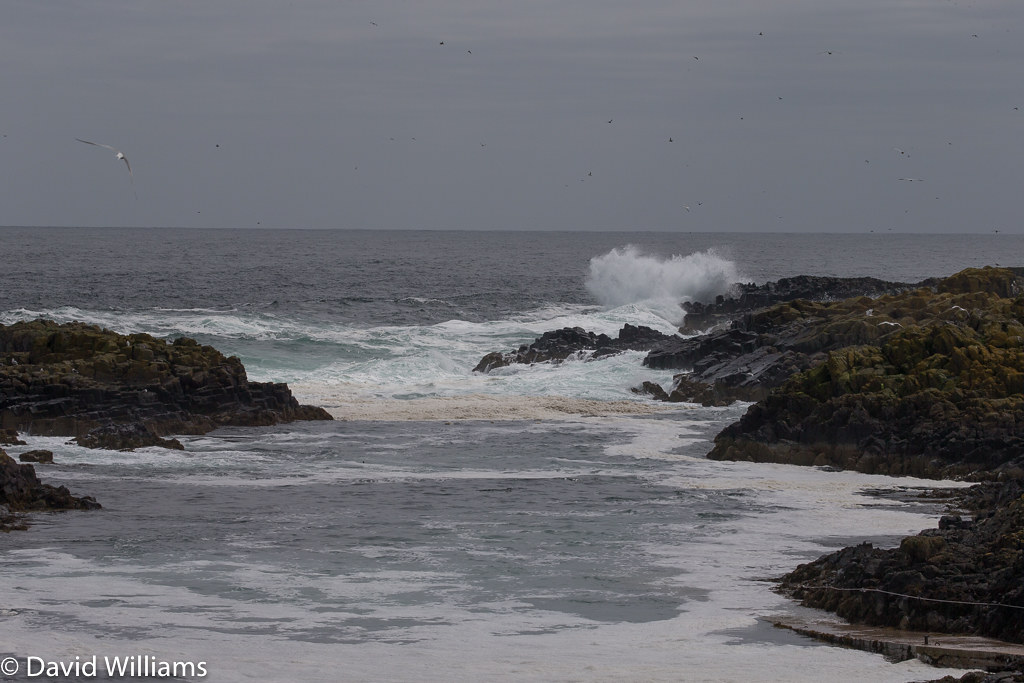
Once you got through the gap in the rocks to the entrance you had reached safety but the alternative was that you were swept on to the rocks in a huge wave.
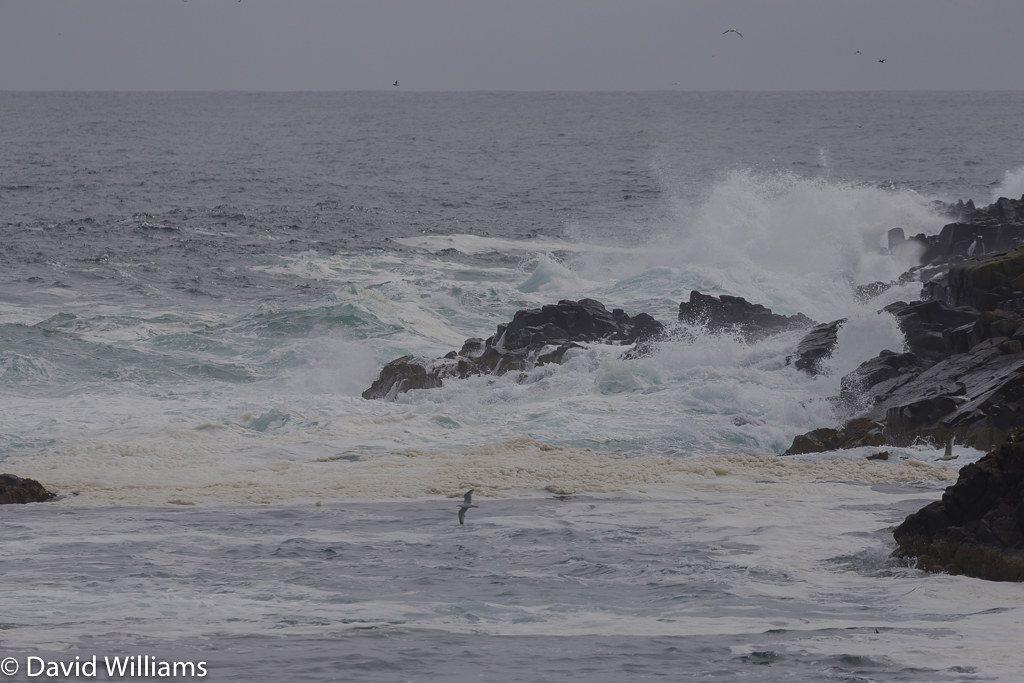
Obviously we made it! I have to say though, I did wonder and it was in no small part to the skill of our boatman, Roy. We all were in total admiration as he throttled through a gap in the waves at high speed. There is another landing stage on the then calm side of the island as seen in this photo taken when we left.
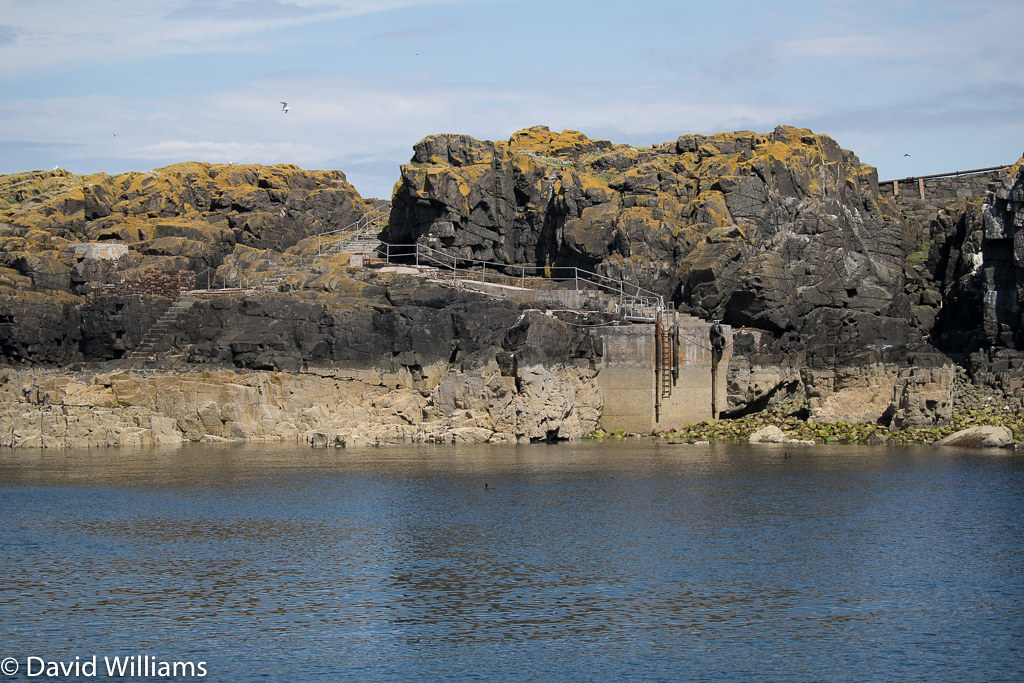
With all our luggage though, landing there would have been impractical as the ladders are too steep to haul up our heavy gear.
The tour boats later in the day landed there though.
There are two ways of getting on to the May. You can go for the day and have 2-3 hours on shore or you can apply to stay for a week. It's a long time on a small island for some folk to even consider. You need to take sufficient provisions to last the week, maybe a bit more in case you are marooned on there if the weather is bad but once you are there the island is yours to wander although you have to stick to the official paths because the whole island is full of fragile Puffin burrows.
The advantages of staying on the island are obvious, you probably never have more than 16 or so people on the island once the day trippers have gone so you have to wildlife to yourself for a one on one encounter. Being fairly used to the daily disturbance of humans the birds are reasonably confiding but there again, they have to be as many are sitting on their nest or attempting to take food to their young. It's of paramount importance not to overstay your welcome in a sensitive location, particularly with the Puffins.
When we arrived the departing group we were replacing looked decidedly glum. They had had a pretty torrid week of poor weather. That's the risk you take.
The day trippers largely come on the May Princess.
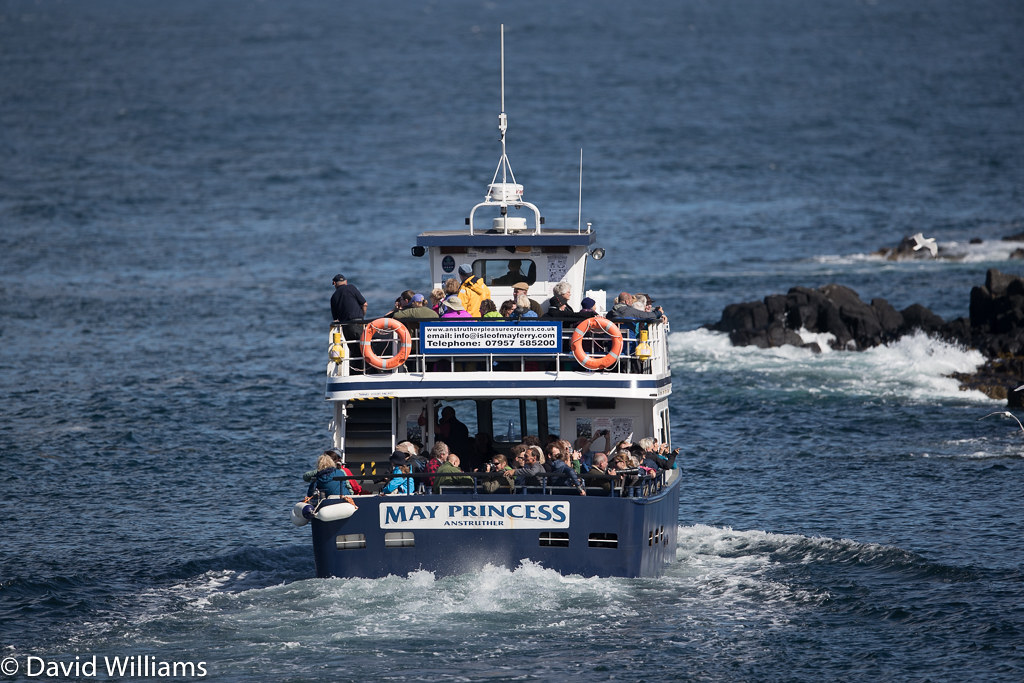
It's licensed to carry about 100 passengers and takes about an hour to travel in each direction. A day trip costs £25.
Alternatively you can travel by rib, a faster 30 minute crossing.
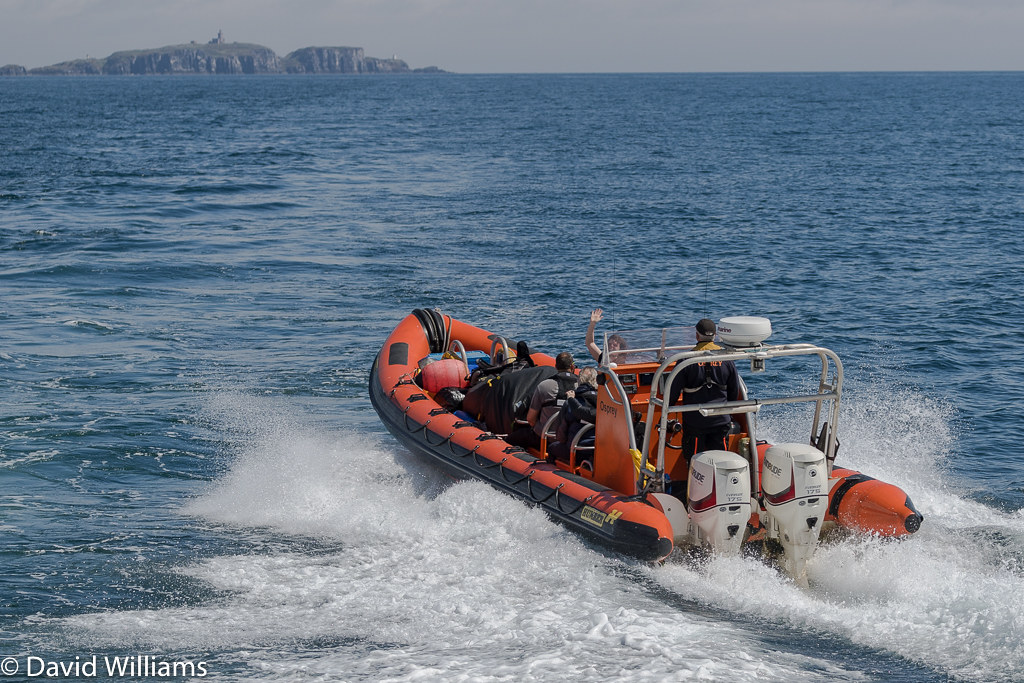
That shot was the party replacing ours heading out to the May on a nice sunny day. Christian and I had had to catch an earlier sailing to ensure I got him back to the airport on time and I have to say, it was pleasant way to travel with probably better opportunities for seawtaching en route.
In rougher weather you would have to dress for the ribs.
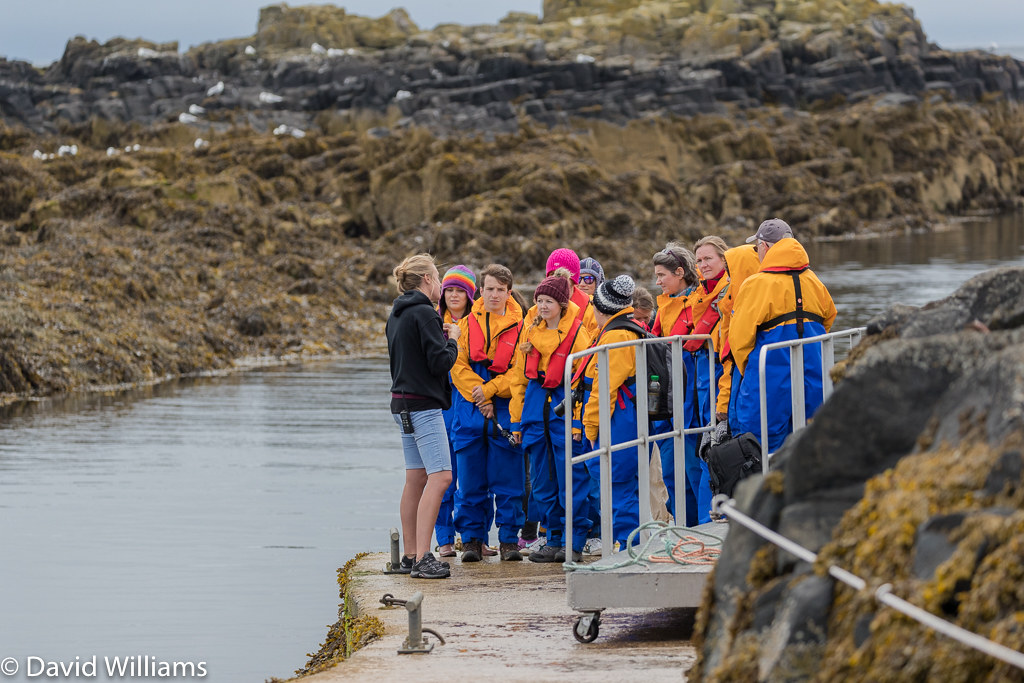
The above party are being briefed by the assistant warden before being let loose on the island!
Of the island itself, it's about 5 miles from the mainland and was the site of an early Christian settlement. The remains of the abbey can still be seen. The island lies in a strategic position in the Firth of Forth and is the site of Scotlands earliest Lighthouse, one that predates the defunct Low Light.
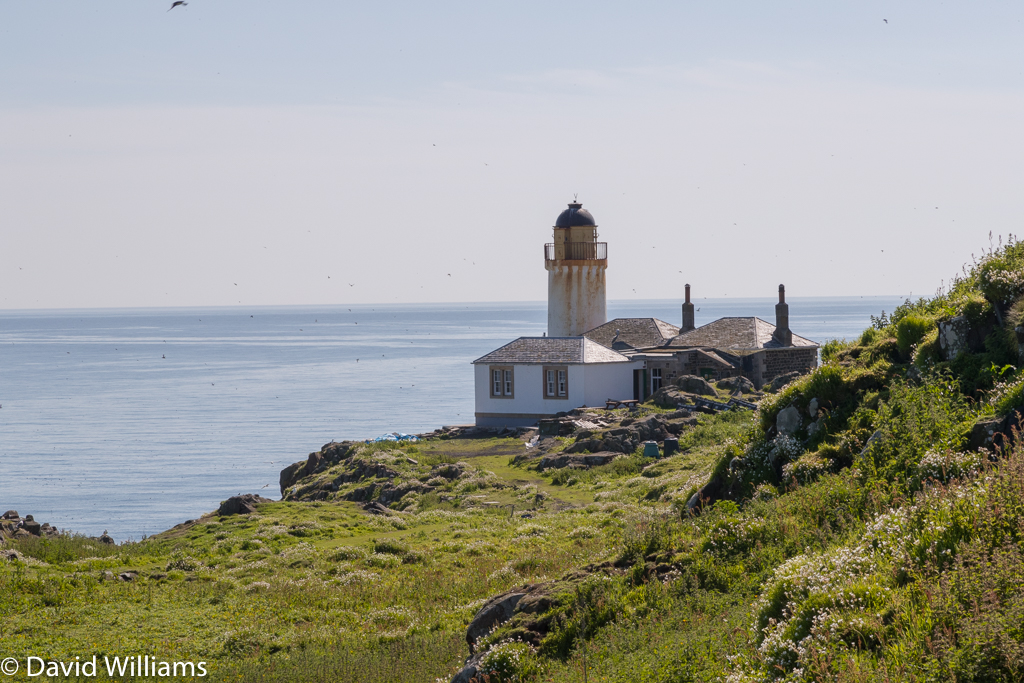
There is still an operational lighthouse, aptly named the High Light!
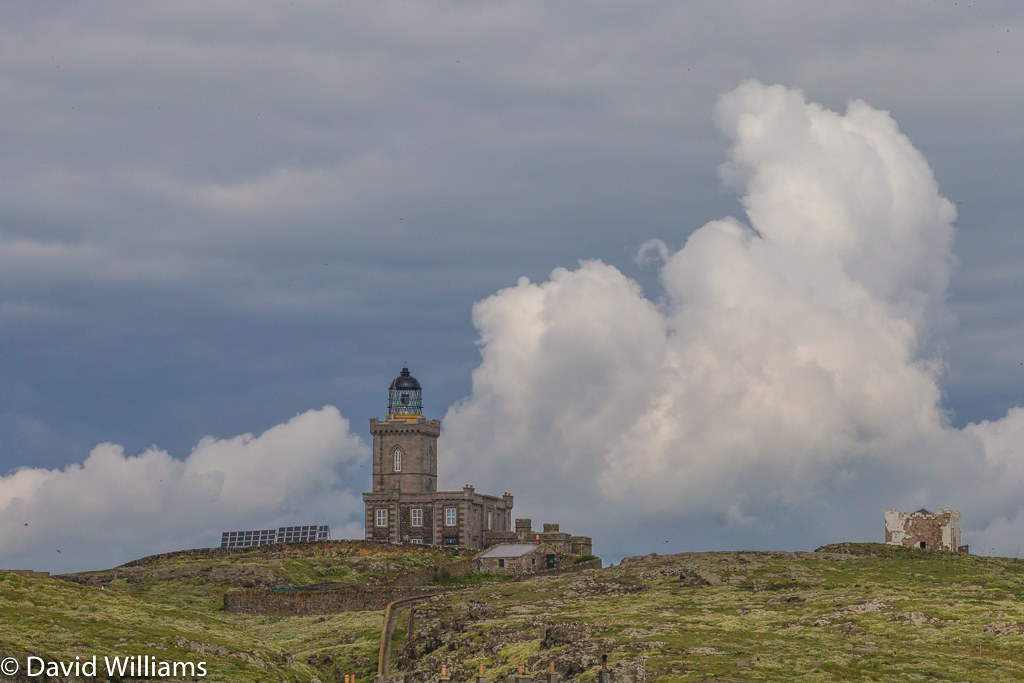
As from this year it is powered by solar panels which can be seen in the picture and it's also open to visitors for an hour each day at the weekends only. (You can also see the original lighthouse remains to the right of the High Light and that was a bonfire lit on a tower!)
The views from the top give a scale of the island.
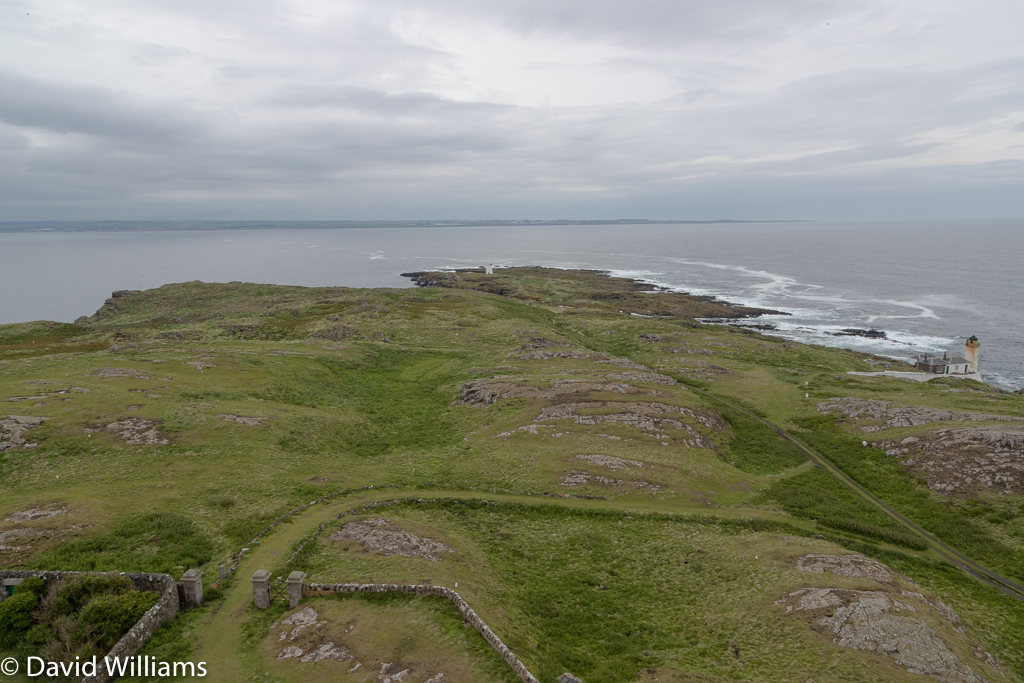
Looking north towards St Andrews, south towards North Berwick
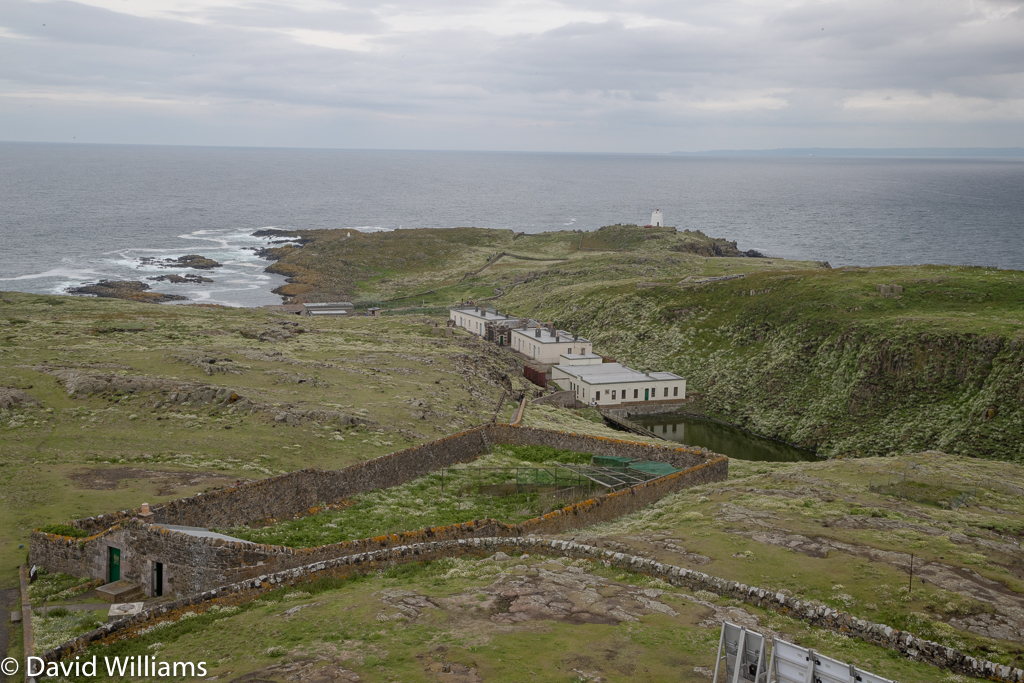
In addition to the Lighthouses at either end of the island there is the remaining buildings that house the steam driven fog horns, All this was generated from the buildings in the centre of the island that now house the warden and researchers accommodation.
So what do they research? Birds of course, but also the Grey Seal population too although most of the latter goes on in winter.
As for the birds, I don't have accurate information but I do know there are around 46,000 breeding pairs of Puffin and 3000 pairs of Kittiwake. Huge numbers of Guillemot and Razorbill line the cliffs, thousands of Lesser Black-backed and Herring Gulls as well as a few Greater Black-backed pairs nest on the ground along with many hundred Terns which seem to have grown in number dramatically in the last year or so. Largely Artic, there are also some Common Terns and for the first time a pair of Sandwich as well. There is a hope they might entice some Roseate too in due course. They have been seen regularly roosting in the harbour but sadly they weren't there when I was! Well, not this time anyway.
Also making up the numbers are a large colony of Shags, here you can see the ringing team undertaking the rather precarious job of doing so. 600 chicks have been ringed so far this year.
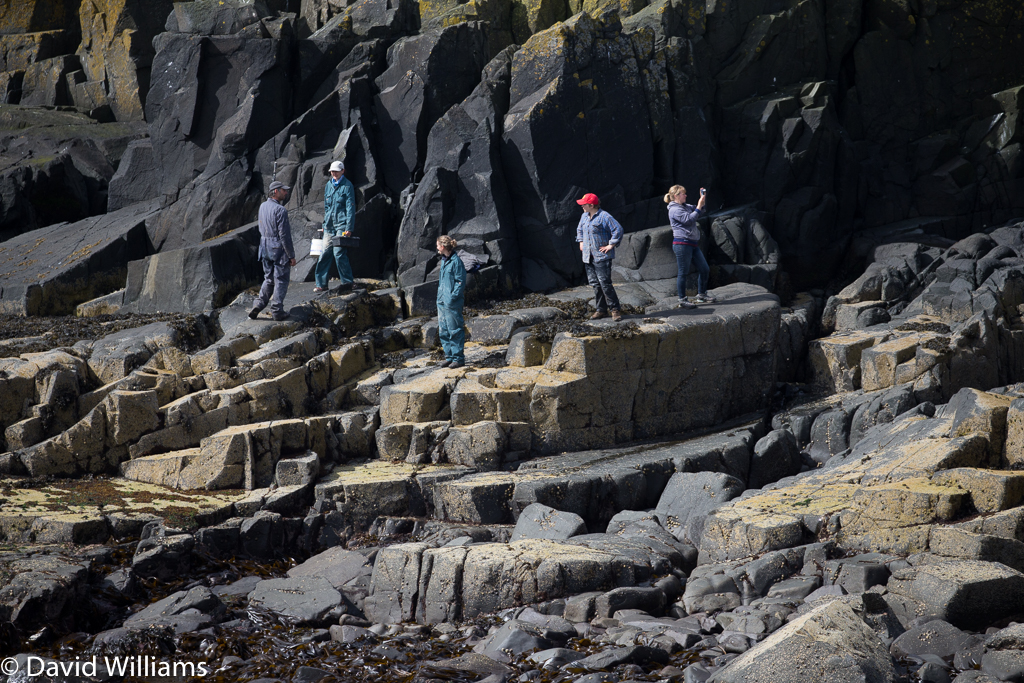
Eider ducks are numerous too although only the females and their ducklings are on the island in Summer, the males long gone. Finally a few Oystercatchers, Pied Wagtails, Wrens, Rock Pipits, Feral Pigeons, Starlings and even a pair of breeding House Swallows just about wrap up the list. The only transient I saw was a single Chiffchaff, one of the others spotted a Siskin but all in all in June it's all about the seabird colonies.
I don't intend giving a daily account of what I saw but rather just share some photos and observations I made during the course of the week.
Hope you enjoy looking.
cheers Dave
T.B.C.
No comments:
Post a Comment